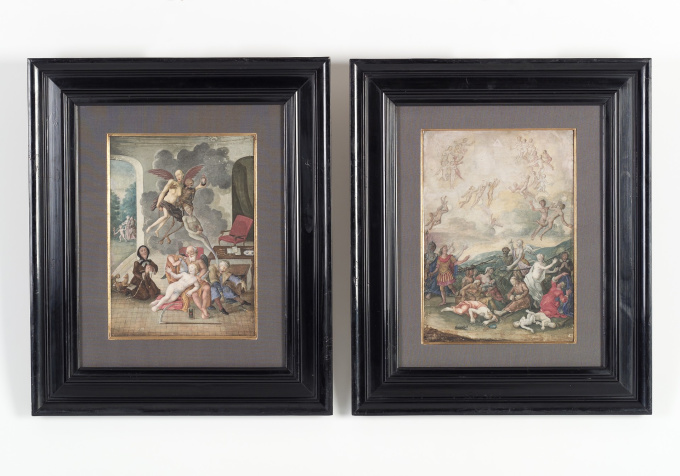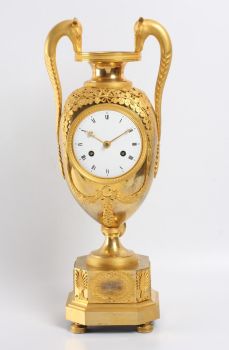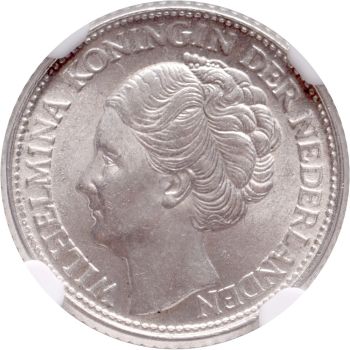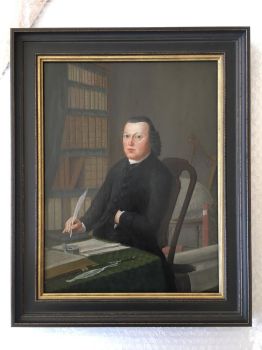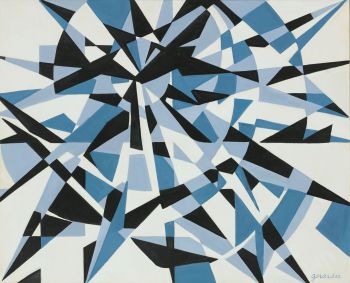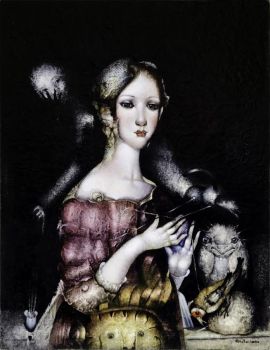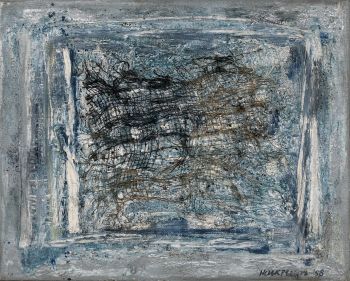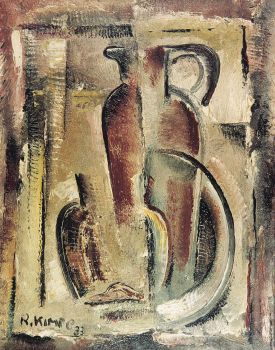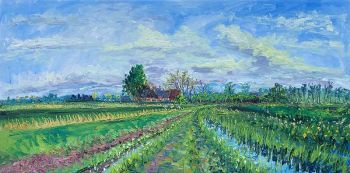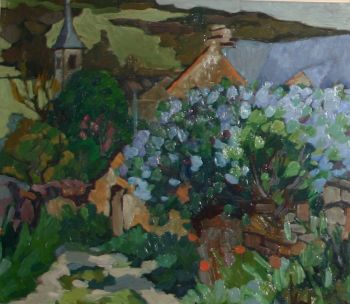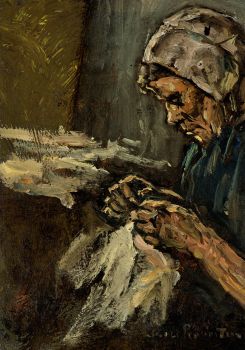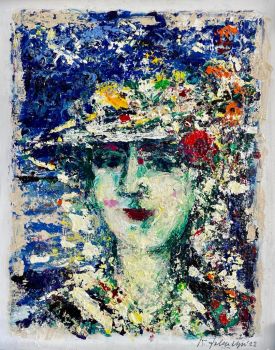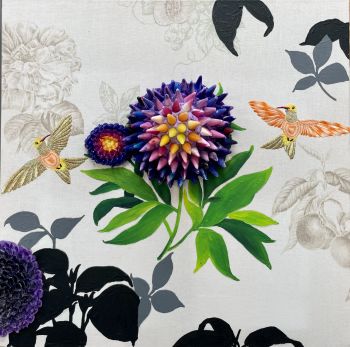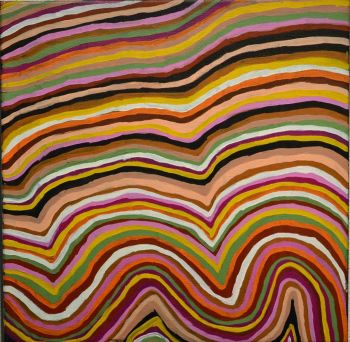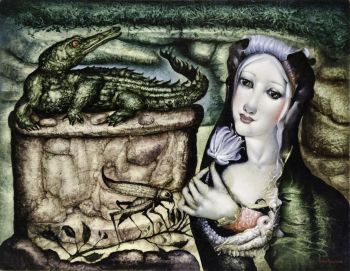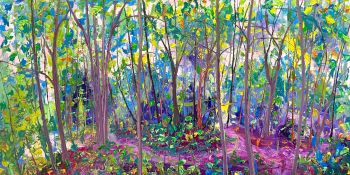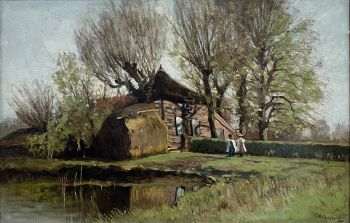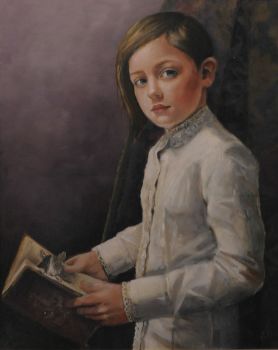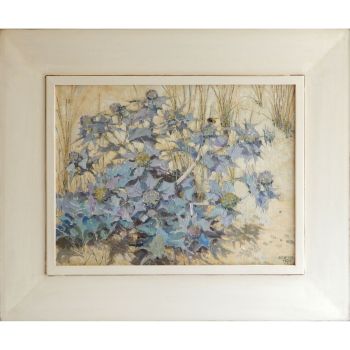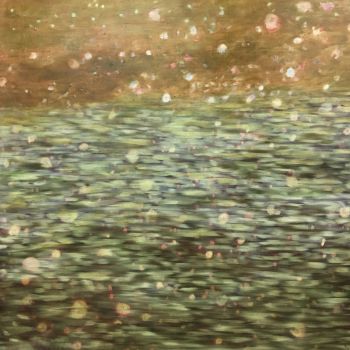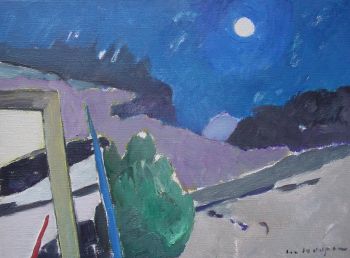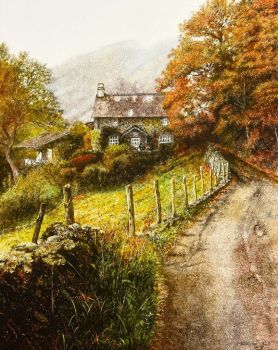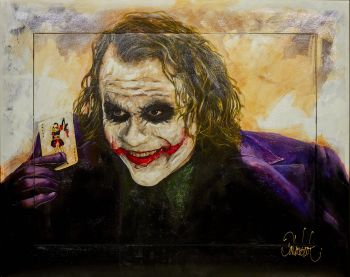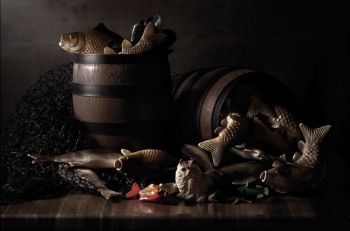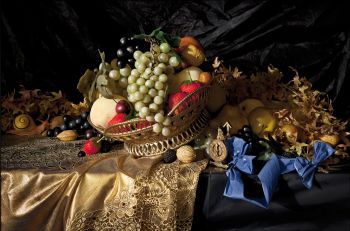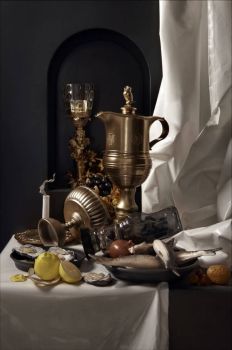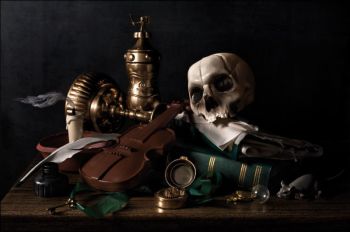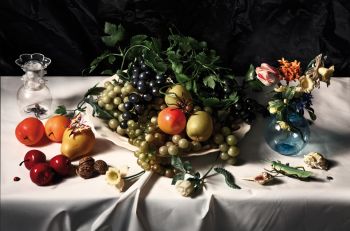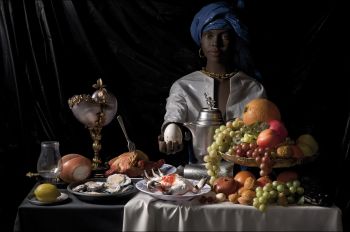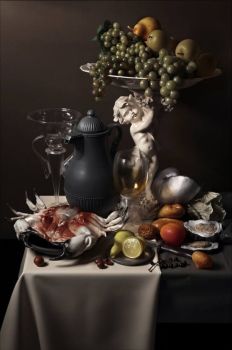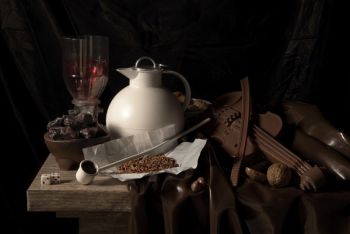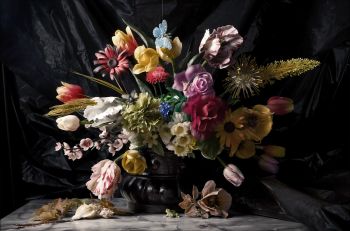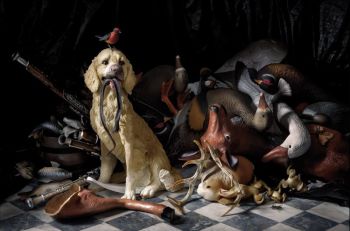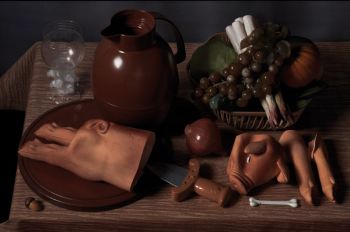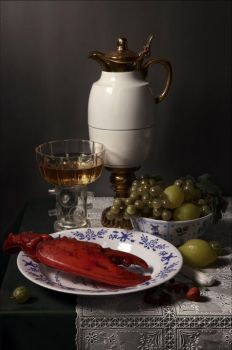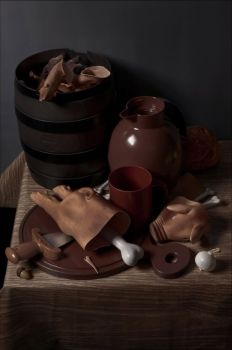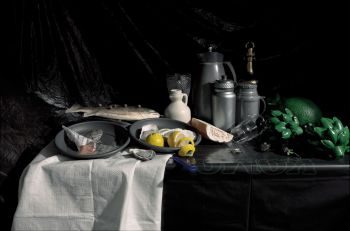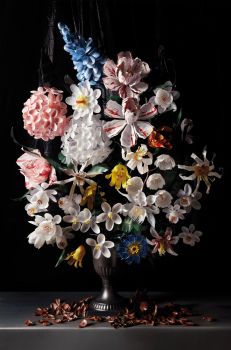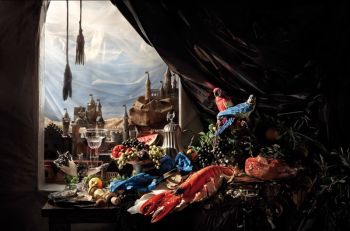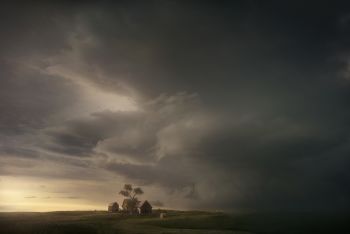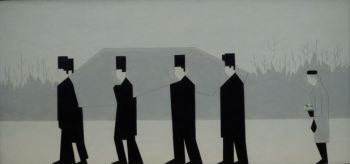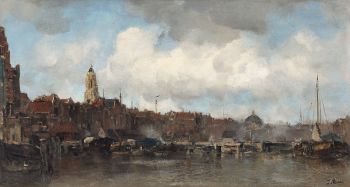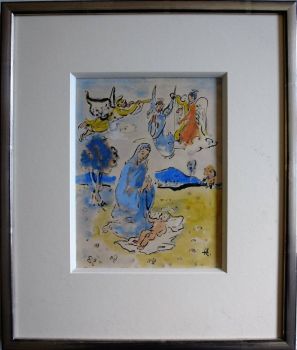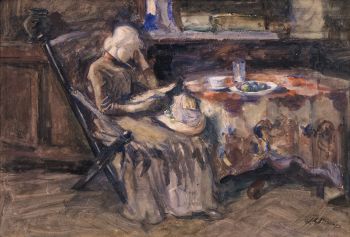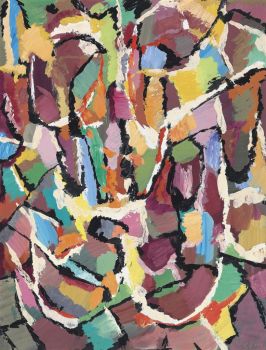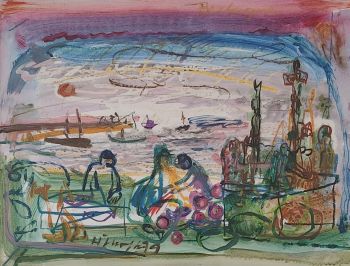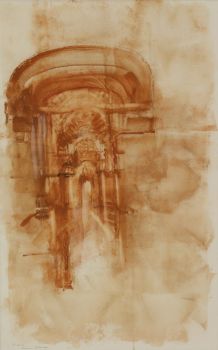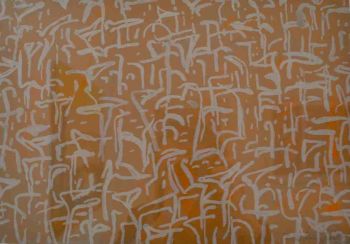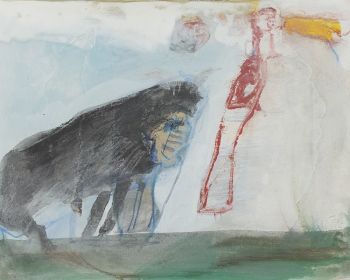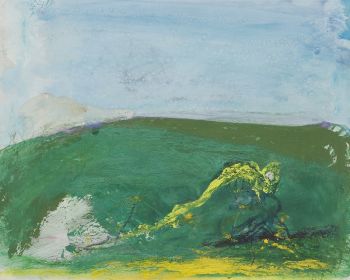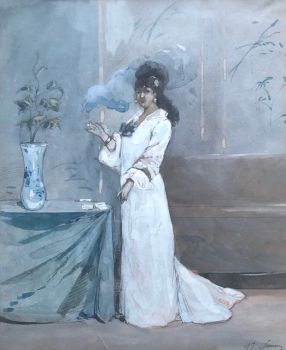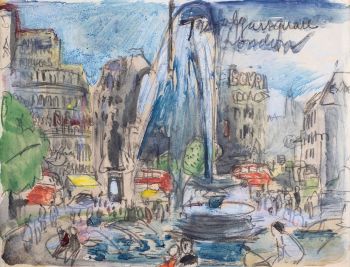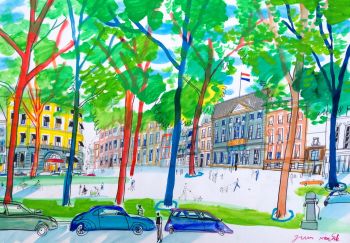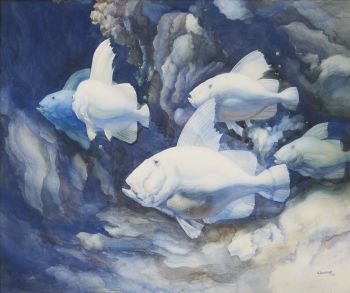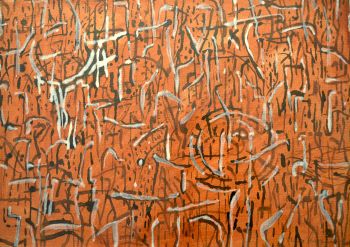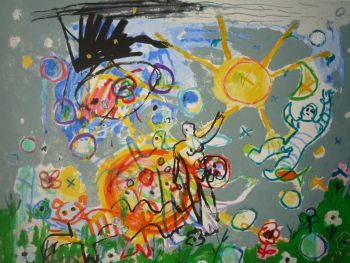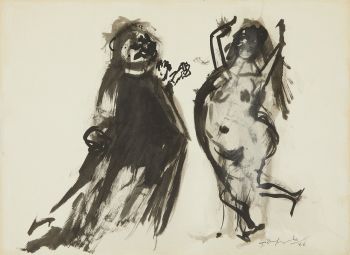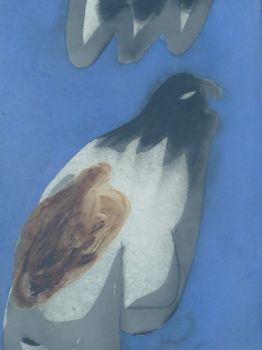Two German Gouache Paintings 1720 - 1730
Onbekende Kunstenaar
GouachePapierAquarelVerf
50 ⨯ 42 cm
Momenteel niet beschikbaar via Gallerease
- Over kunstwerkTwo pictures with a rare Vanitas scene.
Father Time accompanied by Death.
In a chair in the foreground sits a winged Father Time clipping th wings of Life. In front of Time we see an hourglass and a scythe. These are both attributes of Time as is the pair of scissors with which the wings of life are pinioned.
On Time’s right hand we see a man leaned to a stool with a bandage round his head whom’s spirit is escaping through his mouth. Death is literally dragging of the spirit by its hair. Between the legs of the man we see an opened moneybag. On the left of Father Time a kneeling and lamenting woman accompanied by a monkey and a dog that reads a book.
Hovering over this scene we see Death that drags of an old woman with a pearl necklace and a portrait medallion, together with te soul of the dying man.
On the right a table with an inkwell, papers and a written text. On the left in the landscape outside a pair accompanied by a winged boy with a torch.
This unusual representation was almost certainly meant to commemorate the human mortality. Father Time with his many attributes and the grinning Death speak for themselves. The dog usually stands for faithfulness and the monkey for lasciviousness. Here it is can reasonably be assumed that the stand for the human arrogations of foolishness and vanity because they are depicted as impersonations of human beings. The text on the table might refer to the account of the deceased’s life.
The Trapnet of Death
This representiation is undoubtedly an allusion of the Last Judgement, although the separation of souls is depicted in a unique style.
Death, with his head and scythe decorated with flowers, seduces people to stay on his side of the trapnet. Behind him stands a winged figure that beckons the people towards the light.
Before the net in the foreground we see money pouches, gems and a man wearing a crown, all symbols of power and the richess of the world. Possibly the flowers that Death is adorned with refer to the transience of life and swift decay.
The absence of explicitly Christian symbols is striking in both the representations. Only the winged person in the second picture could be conceived as an angel. Traditionally however, it is God himself who in depictions of the Final Judgement seperates the sheep from the goats, surrounded by the Archangels and Apostles. Here we see none of these symbolizations.
Gouache: a technique with water soluble paint and gum arabic. The difference with watercolor is that the result is heavier and much more opaque . - Over kunstenaar
Het kan voorkomen dat een kunstenaar of maker onbekend is.
Voor sommige werken is het niet te bepalen door wie het gemaakt is of dat het is gemaakt door (een groep) ambachtslieden. Voorbeelden zijn beelden uit de Oudheid, meubels, spiegels of handtekeningen die vaak niet duidelijk of leesbaar zijn. Maar ook sommige werken zijn helemaal niet gesigneerd.
Ook kunt u de volgende beschrijving vinden:
•"Toegeschreven aan …." waarschijnlijk een werk van de kunstenaar maar niet zeker of gedeeltelijk
•“Atelier van ….” of werkplaats van” een werk uitgevoerd in het atelier of atelier van de kunstenaar, eventueel onder zijn toezicht
•“Cirkel van ….” een werk uit de periode van de kunstenaar die zijn invloed laat zien, nauw verbonden met de kunstenaar maar niet noodzakelijkerwijs zijn leerling
•“Stijl van ….” of “Volger van ….” een werk uitgevoerd in de stijl van de kunstenaar, maar niet noodzakelijk door een leerling; kan eigentijds of bijna eigentijds zijn
•“Wijze van ….” een werk in de stijl van de kunstenaar maar van latere datum
•"Na …." een kopie (van welke datum dan ook) van een werk van de kunstenaar
•“Getekend…”, “Gedateerd….” of “Ingeschreven” dan is het werk gesigneerd/ gedateerd/ ingeschreven door de kunstenaar. De toevoeging van een vraagteken duidt op een element van twijfel
•"Met handtekening ...", "Met datum ...", "Met opschrift..." of “Draagt signatuur/datum/opschrift” dan is de handtekening/datum/opschrift toegevoegd door iemand anders dan de kunstenaar
Related artworks
Onbekende Kunstenaar
AN IVORY NETSUKE OF A DUTCHMAN FROLICKING WITH A SMALL BOY18th century
Prijs op aanvraagZebregs & Röell - Fine Art - Antiques
1 - 4 / 12Dutch School
Aankomst van een Nederlandse Oost-Indiëvaarder in de Tafelbaai18th century
Prijs op aanvraagZebregs & Röell - Fine Art - Antiques
1 - 4 / 24- 1 - 4 / 24
Jan Toorop
Annie Hall Vrouw van de schilder, aan het lezen1886
Prijs op aanvraagStudio 2000 Art Gallery
1 - 4 / 24

